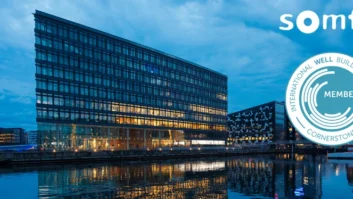In the most ambitious merger in the history of what has been traditionally called the custom integration business, six home technology firms in the western U.S have joined together to form VIA International. With a focus on providing full-service digital concierge-level service to hundreds of ultra-high net worth clients across the country, the pact combines Cyber Sound, DSI Entertainment, Engineered Environments, Paragon Technology, S3 Aurant, and Studio AV into one 300-person company covering 12 regional markets.
The company currently has offices in Alameda, CA, Los Angeles and Santa Barbara, CA; Aspen, Denver, Steamboat Springs, and Telluride, CO; Scottsdale, AZ; Park City, UT; Bozeman and Missoula, MT; and Jackson, WY. The founding partners are Randy Stearns, from Engineered Environments, Arthur Mayo from S3 Aurant, David Raife from Paragon Technology Group, Cory Reistad from Studio AV, Eric Thies from DSI Entertainment Systems, and Jon Summer from Cyber Sound and Security. Mark Hodges serves as chairman of the board.



From top, CEO Randy Stearns, chairman of the board Mark Hodges, and partner Arthur Mayo
In an interview with Residential Systems magazine, VIA Internaional CEO Randy Stearns said that the six partner companies realized back in 2011 that even though they were all regional market leaders, individually it was difficult to provide the concierge-level service that is “demanded and deserved” by their high net worth client base and that working collaboratively would make them stronger. That’s one of the reasons Stearns, as CEO of Alameda, California’s Engineered Environments, had completed other smaller mergers and acquisitions prior to this one.
Five of the six company owners had grown to know one another through their membership in the buying group HTSA. Although their goal is to take their business nationwide within five years, Stearns said the company felt that focusing on the western U.S. was ambitious enough, initially. The company partners first met as a group way back on December 5, 2011, when they elected Stearns as CEO and Paragon Technology Group’s Brad Whitehead as COO.
“We accomplished a lot in that first meeting,” recalled Stearns, who has also served as chairman of CEDIA. “We handled it in a really thoughtful way.”
After that initial meeting, the founders began the process of hiring consultants to guide them through the rest of the merger.
“We needed to bring in some quality consultants to walk us through the process, knowing any merger is difficult and a merger of six companies is particularly challenging,” Stearns recalled.
The team hired a mergers and acquisitions expert and a consultant to help normalize the financials from the companies and to help with a valuation process. Industry veteran Ray Lepper was brought in as a best practices consultant visiting the partners’ offices and studying their inner workings to identify their best practices. A strategic business advisor, who was already on Stearns’ team and an investor in his company, became an integral part of the new venture as well. Later, the partners hired in a branding consultant, a PR firm called Racepoint, a law firm, an investment banker, and an HR consultant.
Stearns said that the decision to focus on providing concierge-type services to ultra-high net worth clients was based on the existing client base of the six founding partners.
“It’s obviously our target market and client base now,” he said. “We’re all market leaders in our regions, and typically the market leader deals with the higher end projects and top-end project partners in terms of architects, builders, and that sort of thing. It’s where we live and where we’ve been successful and what has gotten us to where we are today. To change that wouldn’t be smart.”
But the partners felt that they could do something better for these clients and wanted to capture more of their “wallet share” by offering a broader range of services. “We can work in all of their homes and not just their home in LA or just their home in Aspen,” Stearns explained. “To be able to serve that niche of the market better than it’s ever been served before was a kind of underlying objective of the merger.”
Many of these existing clients have other homes in the central and eastern U.S., too, perhaps, but before expanding any further, Stearns said that VIA International will “really lock down” its processes and standardize its systems over the next 10 months.




From top, partners David Raife, Cory Reistad, Jon Summer, and Eric Thies “I think it would be a nightmare if we started expanding before that was all in place,” Stearns said. “Everything from accounting and CRM software to products we use to process flow and internal organizational structure, design documents, programming, everything will be standardized and centralized as much as it makes sense.”
When the company eventually expands, Stearns said, VIA International will look to New York and South Florida first, followed by Boston, Chicago, and Atlanta. Before that, however, the company may “fill in some gaps” in the west, with non-partner satellite offices where its partners already have clients. The potential offices will be in Lake Tahoe, Pebble Beach, San Diego, Las Vegas, Seattle, Dallas, and Austin.
VIA International plans to cover 50 different markets in the next four or five years, and there may be “a couple” of international locations, as well, according to Stearns.
At launch, the company did not disclose its list of vendor partners, because those manufacturers had not been informed of the merger due to non-disclosure agreements. “We have been meeting internally for three months to define what vendors and products we want to standardize on and that list, except for a couple of minors exceptions that we’re tweaking, has been finalized,” Stearns said. “We’re surprisingly in sync because most of us are HTSA members.”
And although the motivation behind the merger was to better serve its clients, Stearns that “ another constituency” that has benefitted by the merger is the company’s employee base.
“We’re very indebted to these guys,” he said. “They’ve helped us get to where we are today, and we’re very thankful for the folks that have worked so hard for us. To give them a career path to something bigger is something meaningful to a lot of us who didn’t feel like we could do that in the past.”
Some employees are already seeing these new opportunities play out. For example, with Stearns stepping up into the CEO role for VIA International he promoted one of his Engineered Environments veterans into a general manager role within that Alameda location. “He was very deserving, but just didn’t have anywhere to go before this merger happened,” Stearns said.
And another side effect of the merger that Stearns and his partners hope will occur is a change in the business model for residential systems integrators.
“In the past, our industry has always thought of our business and revenue model as ‘projects,’ like a roofer or a landscaper, where you do a chunk of work and then you go away and your job is done,” he explained. “And [VIA International’s] business model is very different from that. We view it as acquiring clients for life, and it so happens, that there’s a big chunk of revenues that happen at the beginning in a lot of cases, but really it’s about that long-term relationship with that client and managing the network of connected devices within their home and being their equivalent of the MSP or managed service provider for the network in the home. And we view these relationships as lasting through many years and multiple homes and service relationships. More like a gardener than a landscaper, and more like a pool guy than a pool contractor.”
For more information about VIA International, please visit www.viahome.com.







